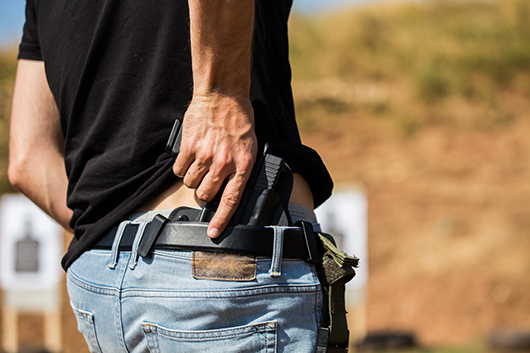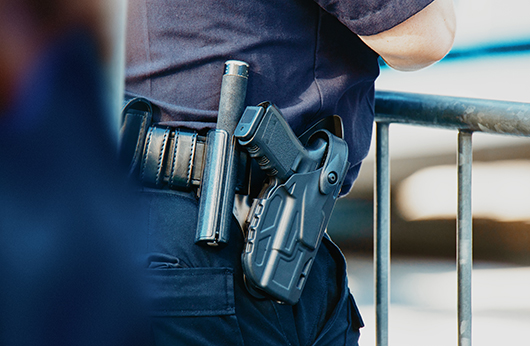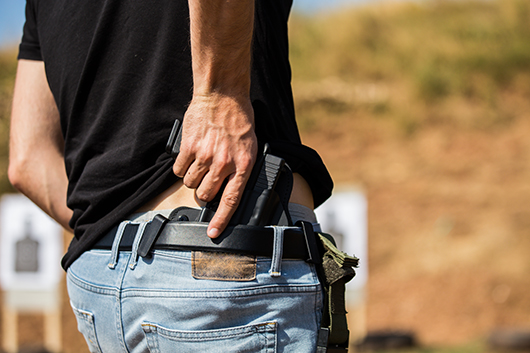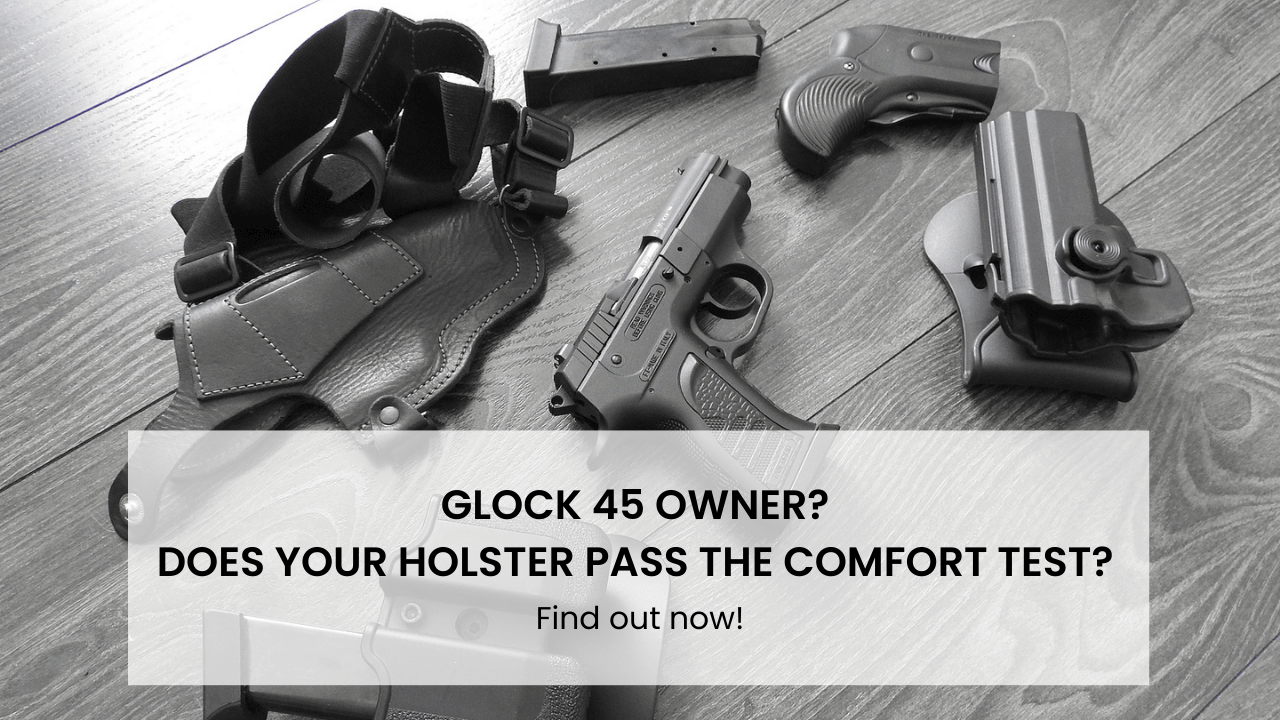Tips on Adjusting and Wearing a Concealed Carry IWB Holster
Mar 2nd 2021

The inside the waistband holster (IWB) is the most popular and commonly-used holster design for concealed carrying available on the market today, offering excellent comfort and concealment.
If you’re new to concealed carrying, spending the time to learn how to wear and adjust the holster is essential to get the best fit and comfort.
Pants and Gun Belts
Most beginners quit carrying a gun because of comfort and fit issues. For this reason, it is essential to address the most common causes of discomfort before selecting a belt or a gun holster.
An IWB concealed carry holster is designed to sit on the inside of your waistband, with a shirt or similar cover garment tucked over it to provide maximum concealment.
Depending on the holster and pistol selected, wearing an IWB holster means strapping an additional 1” to 2” of material between your body and waistband. If you tend to wear snug or form-fitting pants, you may have to wear pants that are one size above yours to avoid tightness and discomfort.
A typical carry handgun weighs between 15 and 30 oz. While it may not seem like a lot, this doesn’t include the weight of loaded ammunition, that of the holster itself, and any additional elements, such as magazines and carriers.
Your belt must be sturdy enough to support these items’ weight, which means you cannot use a regular fashion belt. Use a purpose-built, sturdy gun belt instead.
Carry Positions

The concealed carrying world uses clock position notations to name the different positions your holster can occupy on your belt.
This notation system assumes that the 12 o’clock position corresponds to the direction directly in front of you. For example, if you’re wearing your holster on your right hip, the holster is at the 3 o’clock position.
The three most popular carry methods are strong-side hip, appendix carry, and kidney carry. Each corresponds to two potential clock positions, one for left-handed shooters and one for right-handed shooters.
- Strong-side hip carry is when your holster rides on the hip corresponding to your strong hand: 3 o’clock if right-handed, 9 o’clock if left-handed
- Appendix carry refers to the practice of carrying your holster directly in front of your body, around the 12 o’clock position.
- Kidney carry is when your holster rides behind the hip, over the kidney. A right-handed kidney carry is at the 4 o’clock position, whereas a left-handed kidney carry is at the 8 o’clock position.
Try different carry methods in different situations (standing, sitting in your car or a chair, walking, etc.) until you find the one most comfortable to you in the broadest range of situations possible.
Retention Adjustment
The part in which your handgun sits is called a retention shell. Depending on the holster material employed, this retention shell may be adjustable, typically requiring the adjustment of screws or hex nuts.
An adequate amount of tightness should offer some amount of resistance when pulling it out of the holster, but not so much that it takes a significant amount of effort just to draw your handgun.
Cant Adjustment
Cant is the rotation angle of your firearm relative to your waistband. Cant adjustment is typically made by loosening specific screws or nuts, rotating the holster to the desired angle, then tightening them back.
Neutral cant (0°) means the barrel is perfectly vertical. Positive cant rotates your handgun forwards, causing the muzzle to point behind you, whereas negative cant rotates your gun rearwards, causing the muzzle to rise.
Depending on your carry position and handgun choice, adjusting cant may be necessary to ensure the best fit and comfort.
For example, full-size guns carried in an appendix setup frequently use a neutral cant to prevent the barrel from digging into the carrier’s thigh.
Ride Height Adjustment
Your holster’s ride height is its depth relative to your waistband. Adjustable belt clips allow the carrier to adjust their ride height.
A deeper ride height improves concealment and reduces printing but may make it more challenging to get a solid grip on your handgun. A higher ride height presents more of the gun, making it easier to grip, at the risk of it tipping and falling out of your holster.
The Takeaway
Incognito Concealment offers a large selection of IWB, OWB, and paddle holsters, compatible with the most popular handgun platforms on the market today. Our products are 100% hand-crafted in the USA and are fully adjustable and customizable.
Call us at (586) 999-5820 if you have any questions or requests.











